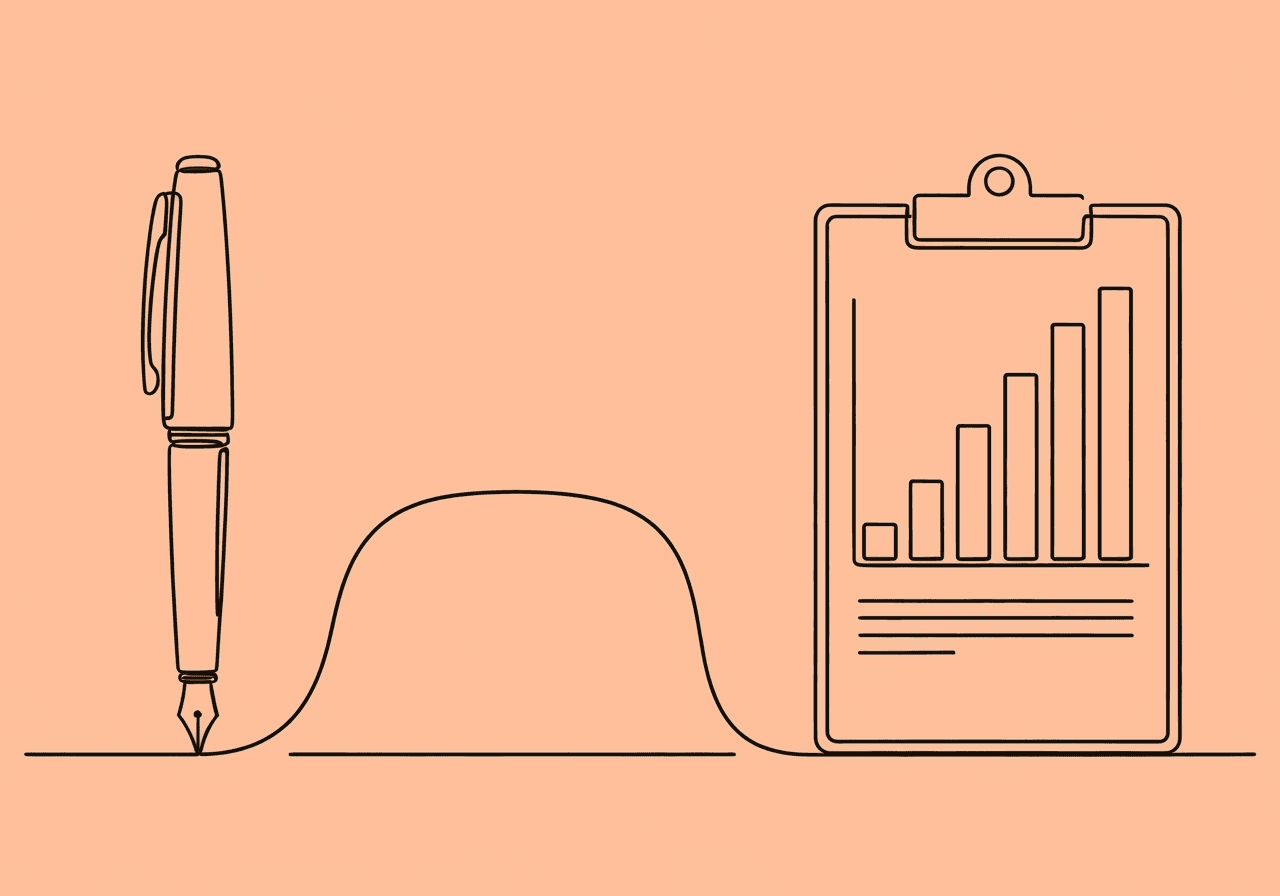Reduce RBT Documentation Burnout: 10 BCBA Strategies

Imagine an RBT finishing a long, rewarding session with a client, only to face a mountain of paperwork. This is a daily reality in Applied Behavior Analysis (ABA), where documentation, while vital for tracking progress, often leads to burnout. Studies show that up to 96% of RBTs experience severe burnout symptoms, largely due to overwhelming administrative tasks after hours According to Southern Illinois University (2023). As a Board Certified Behavior Analyst (BCBA), you can significantly reduce RBT documentation burnout by implementing targeted, efficient strategies.
By optimizing workflows, you not only boost morale and retention but also enhance the quality of client care. Here’s how you can make a difference:
- Implement standardized templates and real-time data capture tools.
- Define clear, minimal documentation standards to cut down on unnecessary work.
- Set firm boundaries for when documentation should be completed.
- Provide training on efficient documentation practices.
What Causes Documentation-Fueled RBT Burnout?
RBT burnout is a combination of emotional fatigue and administrative overload. Repetitive, manual note-taking is a primary cause, with burnout rates in ABA reaching between 70.7% and 77% annually According to Autism Spectrum News (2023). When RBTs spend hours on paperwork after their sessions, it leads to exhaustion and lower job satisfaction.
The Behavior Analyst Certification Board (BACB) provides BCBA RBT workload guidelines that require 5% of RBT service hours to be supervised. However, these guidelines also implicitly support the need for efficient documentation to maintain a healthy work-life balance According to BACB. Excessive paperwork disrupts this balance, contributing to high turnover rates. By improving documentation efficiency in ABA, you can create a more sustainable and ethical work environment.
10 BCBA-Led Strategies to Reduce RBT Documentation Burnout
In your role as a supervisor, you are perfectly positioned to drive immediate improvements. These ten strategies, grounded in proven practices, address common documentation challenges.
1. Use Real-Time Data Capture Tools
Instead of having RBTs save notes for the end of the day, shift to in-the-moment logging with mobile-friendly apps. This allows technicians to record behaviors as they happen, which can cut after-hours work significantly. As the BCBA, your role is to select HIPAA-compliant software and properly train your team, ensuring you align with BACB data integrity requirements. For more information, explore our guide to ABA data software.
2. Standardize Session Note Templates
Create uniform templates for SOAP notes (Subjective, Objective, Assessment, Plan) that only include necessary fields. This approach reduces the mental effort needed for each note and ensures consistency, a practice recommended by the BHCOE According to BHCOE (2021). Customizing templates for specific client needs and reviewing them monthly keeps them relevant and effective.
3. Automate Data Visualization
Adopt software that automatically generates graphs and progress summaries from the data RBTs collect. This eliminates the need for manual charting and gives you instant insights for supervision. It frees RBTs from a tedious task while helping you focus your review time on key trends and client progress According to Rethink Behavioral Health (2024).
4. Define Minimum Documentation Standards
Work with your team to clarify what is truly required in session notes. Focus on observable behaviors, interventions, and outcomes, which aligns with BACB ethics. Setting clear minimums, such as brief narratives for routine sessions, can drastically cut documentation time without compromising compliance According to CentralReach (2023).
5. Create Efficient RBT-BCBA Communication Logs
Replace long email threads with a shared digital platform for quick updates. This method is consistent with BACB's supervision documentation rules, which require logging details like the date and topics covered in a concise format According to BACB. Regular check-ins can then be used to address issues, reducing the need for exhaustive written logs.
6. Delegate Non-Clinical Administrative Tasks
Offload tasks like billing preparation or organizing files to administrative staff. This reserves your RBTs' time for clinical duties. BACB guidelines permit this delegation as long as the core data collection remains with the RBT According to All Star ABA (2024). A quarterly workload audit can ensure RBTs aren't overburdened with non-essential tasks.
7. Train RBTs on Efficient Documentation
Offer regular workshops focused on time-saving techniques, such as using voice-to-text for notes or learning software shortcuts. Providing training is shown to reduce burnout by building RBTs' confidence and competence in using streamlined processes According to Master ABA (2024). You can enhance this training with hands-on practice during supervision.
8. Integrate AI-Powered Autofill Features
Consider tools that pre-fill recurring information like client demographics or standard session prompts. Industry reports suggest this can cut note-creation time by 30-40% while maintaining accuracy According to Blueprint AI (2024). Just be sure to monitor its use to ensure it complies with BACB ethical standards.
9. Set Clear Documentation Time Boundaries
Establish a policy that RBTs should complete their session notes within 15 minutes post-session. Using built-in app timers can help enforce this boundary and prevent work from spilling into personal time—a key driver of burnout According to Raven Health (2024).
10. Encourage Peer Review and Feedback
Implement monthly team huddles where RBTs can share documentation tips and support one another. A structured feedback system improves both efficiency and team morale. As a leader, your participation can foster a collaborative culture focused on optimizing ABA documentation. Developing these BCBA leadership skills is essential for building a resilient team.
Better Documentation, Higher Retention, and Improved Outcomes
Optimizing documentation directly fights the high RBT turnover caused by administrative fatigue. Efficient, real-time data capture helps protect work-life balance, which can boost retention rates significantly According to CentralReach (2024). When RBTs can focus more on meaningful client interactions than on paperwork, they are more likely to stay and grow in their roles. This stability, in turn, allows you to make faster, data-driven intervention adjustments, leading to better client progress According to Advanced Autism Services (2024).
Frequently Asked Questions
What are the main factors contributing to burnout in RBTs?
Key factors include emotional exhaustion, heavy caseloads, and demanding documentation. A lack of supervisory support can worsen these issues, but implementing clear and efficient systems can mitigate burnout significantly According to Discovery ABA (2024).
How does the documentation burden specifically impact RBT burnout?
Lengthy, manual documentation, especially after hours, increases stress and disrupts work-life balance. This is a primary reason for high turnover. Introducing real-time tools can reduce this burden by up to 50% According to Raintree Inc. (2024).
What are BCBA guidelines for RBT workload and supervision?
The BACB requires that 5% of an RBT's monthly service hours are supervised, including two face-to-face sessions. All supervision activities, including performance notes and topics discussed, must be documented to ensure compliance According to BACB.
How can organizations reduce RBT burnout through documentation streamlining?
By adopting mobile data capture apps, standardized templates, and automation, organizations can cut administrative time. This empowers RBTs and has been shown to improve retention in supportive work environments According to Rethink Behavioral Health (2024).
What tools are recommended for improving ABA documentation efficiency?
HIPAA-compliant software that offers real-time data capture, automated reporting, and mobile access is highly recommended. These tools help reduce burnout while also enhancing data accuracy for improved client outcomes According to CentralReach (2023).
How does efficient documentation affect client outcomes in ABA?
Timely and accurate data allows BCBAs to make quick adjustments to a client's intervention plan. This data-driven approach leads to better skill acquisition and more effective therapy overall According to AB Toolbox (2024).
In short, your efforts to reduce RBT documentation burnout create a powerful ripple effect. By implementing better tools, standards, and support systems, you not only lower turnover but also elevate the quality of care your clients receive. Start by auditing your current processes with your team and piloting one or two of these strategies. Acting now will help you build a more resilient and effective ABA team.
Popular in ABA Session Notes & Tools
- 1
RBT Supervision Documentation: 2025 BACB Guide & Templates
1,3119 min read - 2
Master ABA Medical Necessity Documentation: Avoid Denials
5989 min read - 3
Master ABA SOAP Notes: Guide for RBTs & BCBAs
5379 min read - 4
ABA Documentation Best Practices for RBTs: Essential Tips
5165 min read - 5
Guide to ABA Progress Reports for Insurance Reauthorization
4458 min read
Popular in ABA Session Notes & Tools
- 1
RBT Supervision Documentation: 2025 BACB Guide & Templates
1,3119 min read - 2
Master ABA Medical Necessity Documentation: Avoid Denials
5989 min read - 3
Master ABA SOAP Notes: Guide for RBTs & BCBAs
5379 min read - 4
ABA Documentation Best Practices for RBTs: Essential Tips
5165 min read - 5
Guide to ABA Progress Reports for Insurance Reauthorization
4458 min read
Related Resources
Explore more helpful content on similar topics

BCBA Documentation Time Hacks: 8 Simple Tips
Discover BCBA documentation time hacks: 8 simple, non-tech tips to streamline ABA notes, reduce burnout, and ensure compliance. Boost your productivity today!

Narrative vs Data-Driven ABA Notes: Pros & Cons
Compare Narrative vs Data-Driven ABA Notes: pros and cons for insurance compliance, time efficiency, and clinical decisions. Our side-by-side table helps optimize your ABA sessions and documentation today.

BCBA Maintenance Documentation: Essential Checklist Guide
Discover best practices for BCBA maintenance documentation with our essential checklist guide. Learn to justify maintenance probes, document ABA skill fading, and ensure client independence through mastery data and rationales.